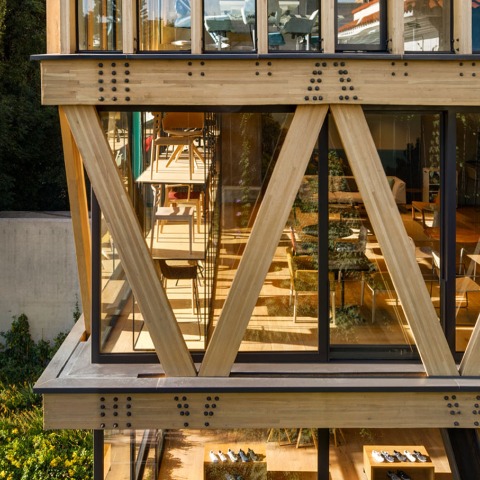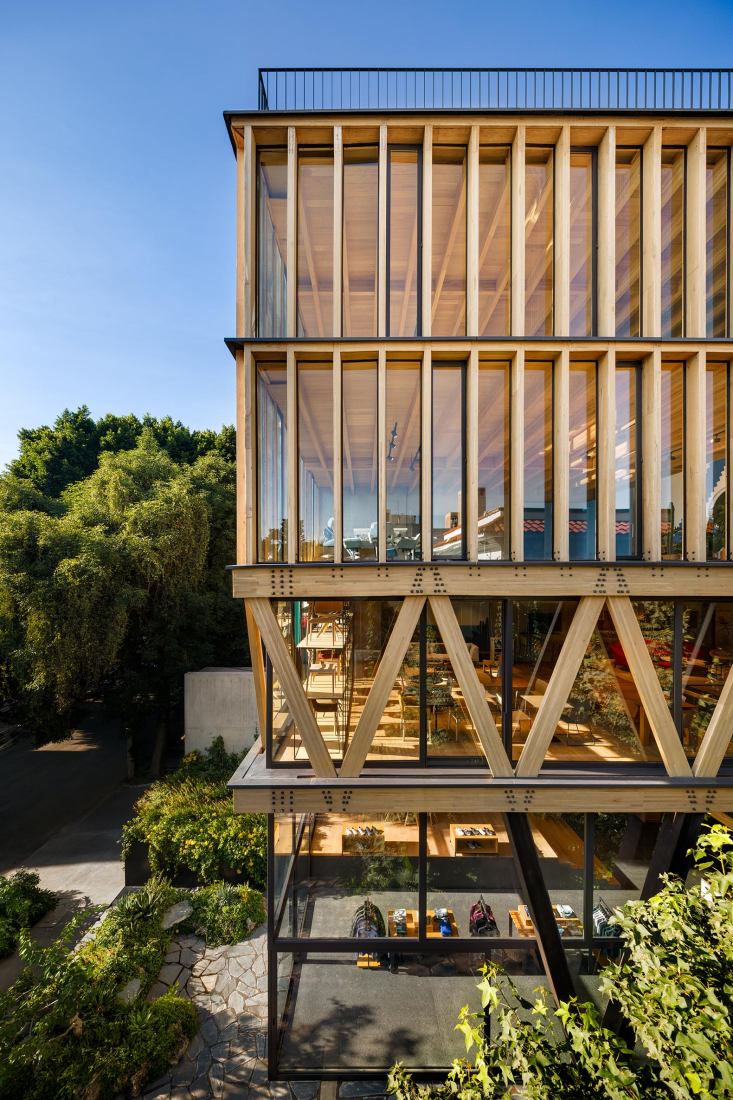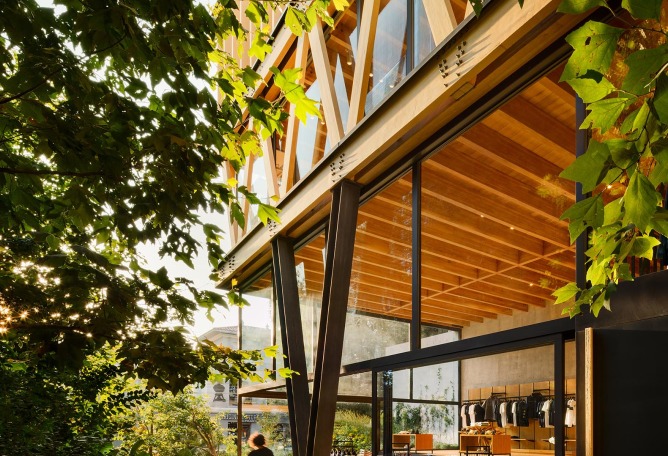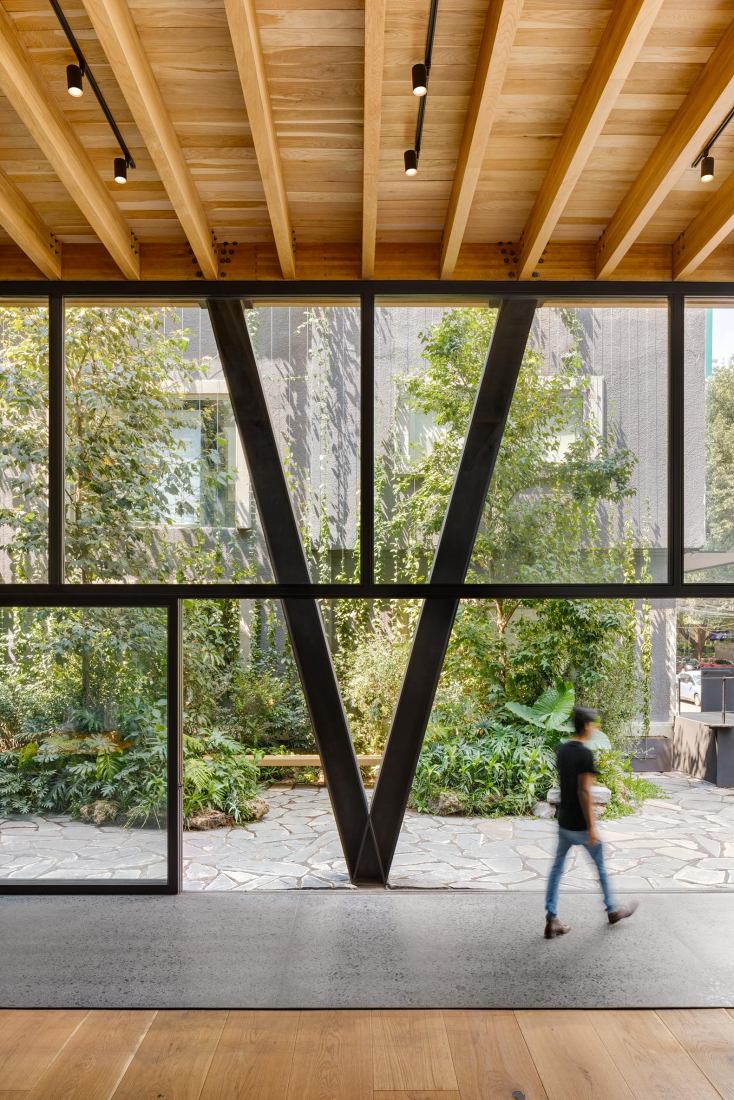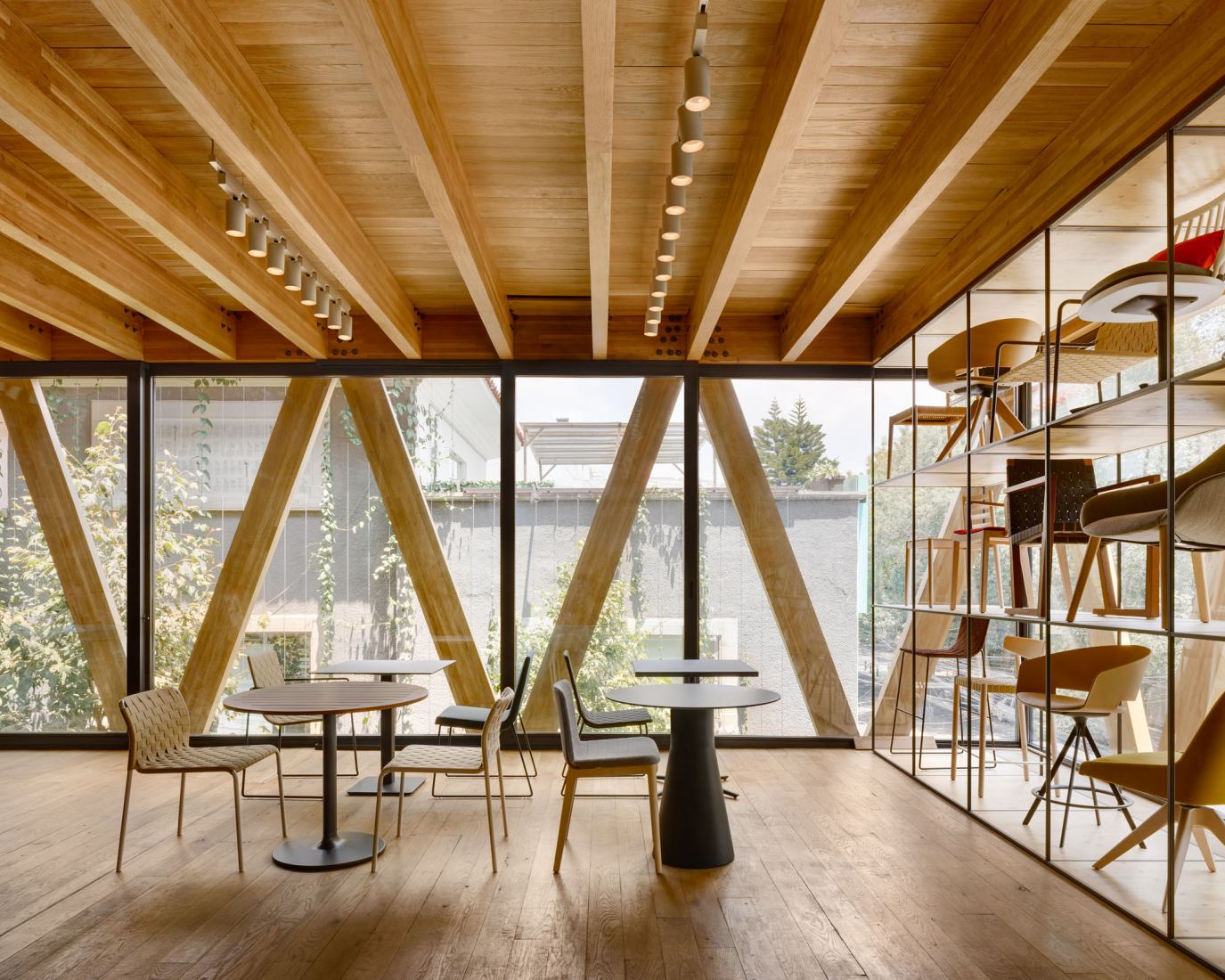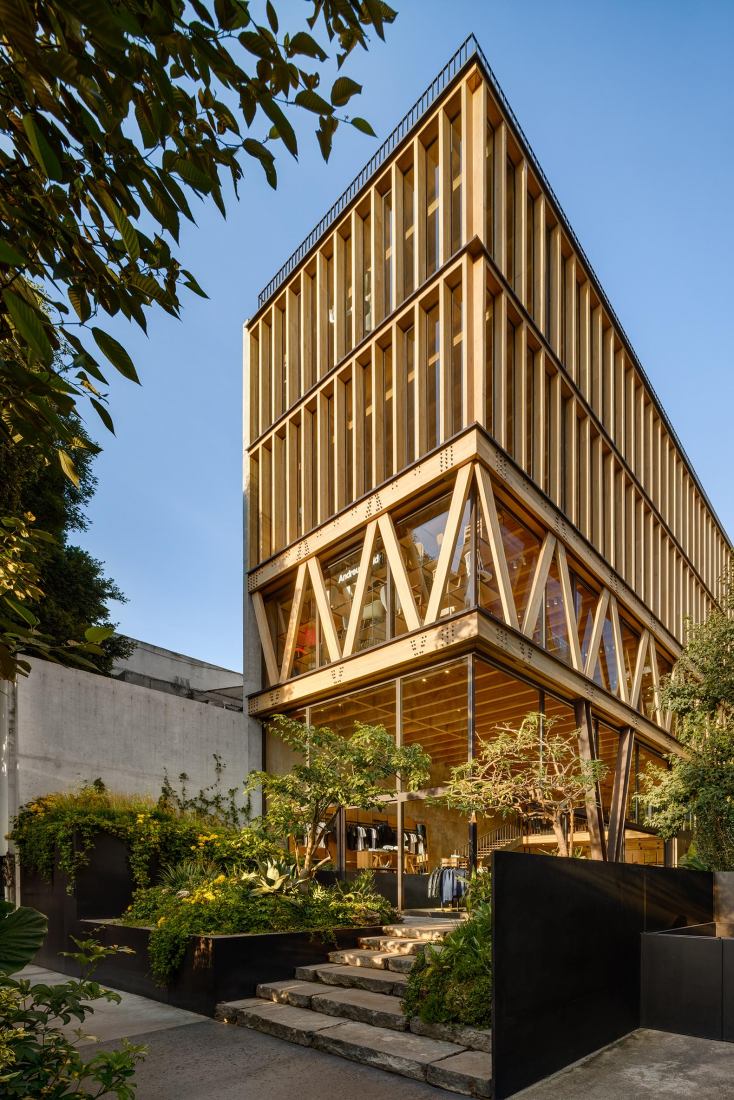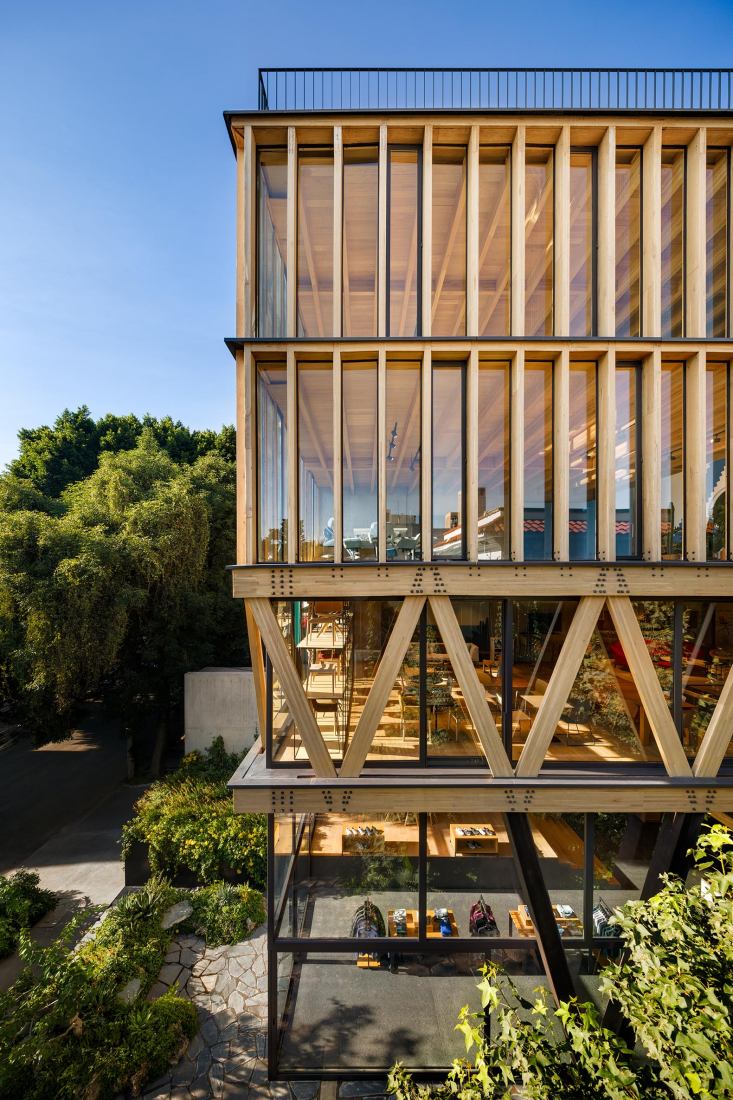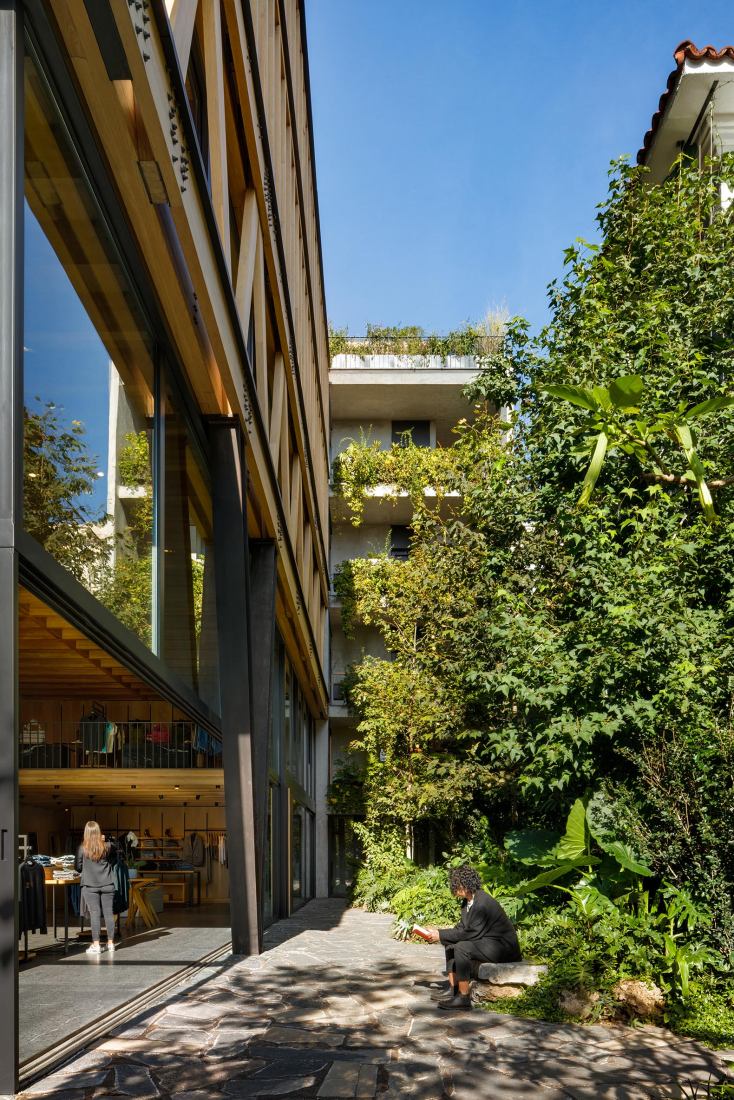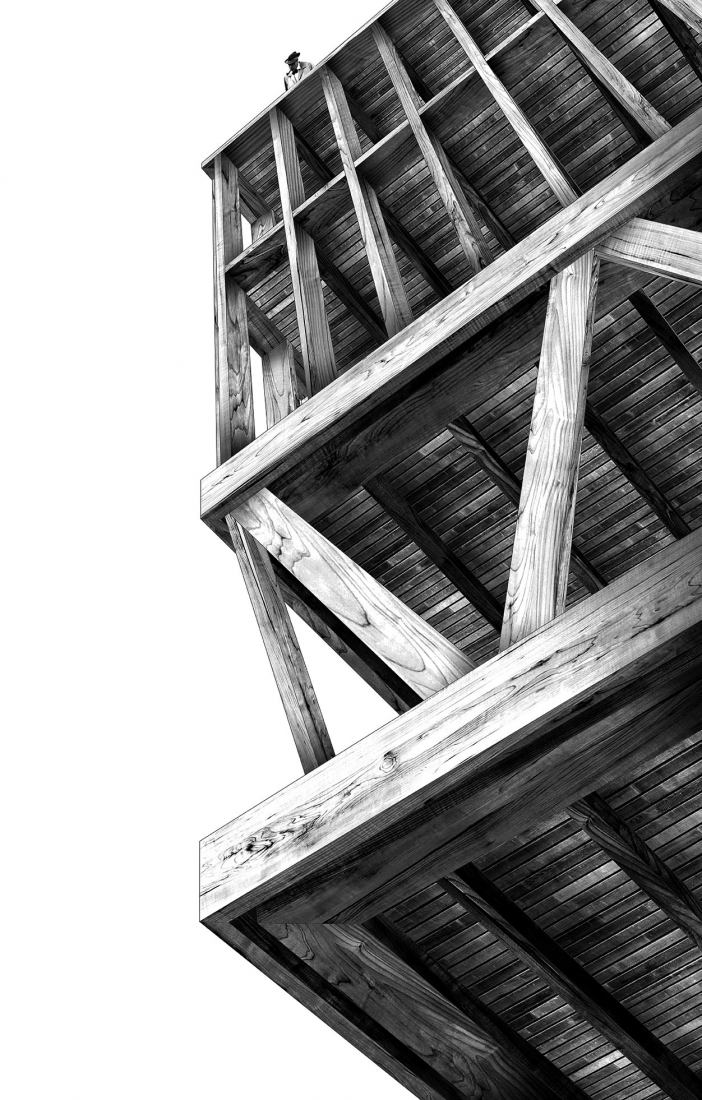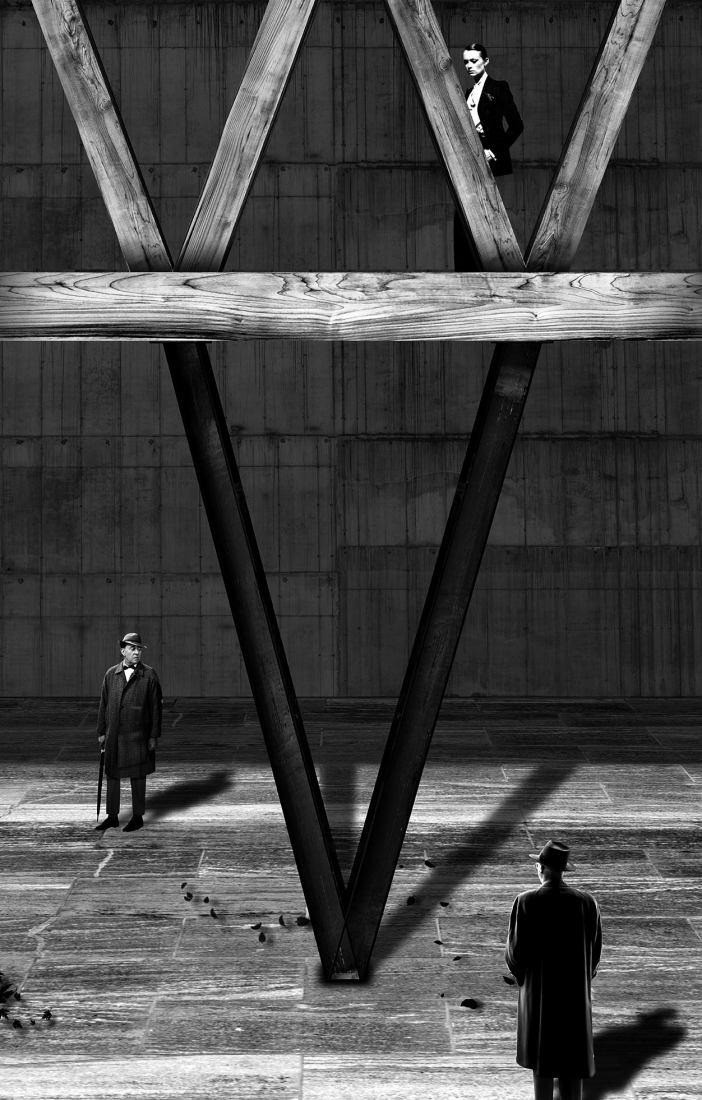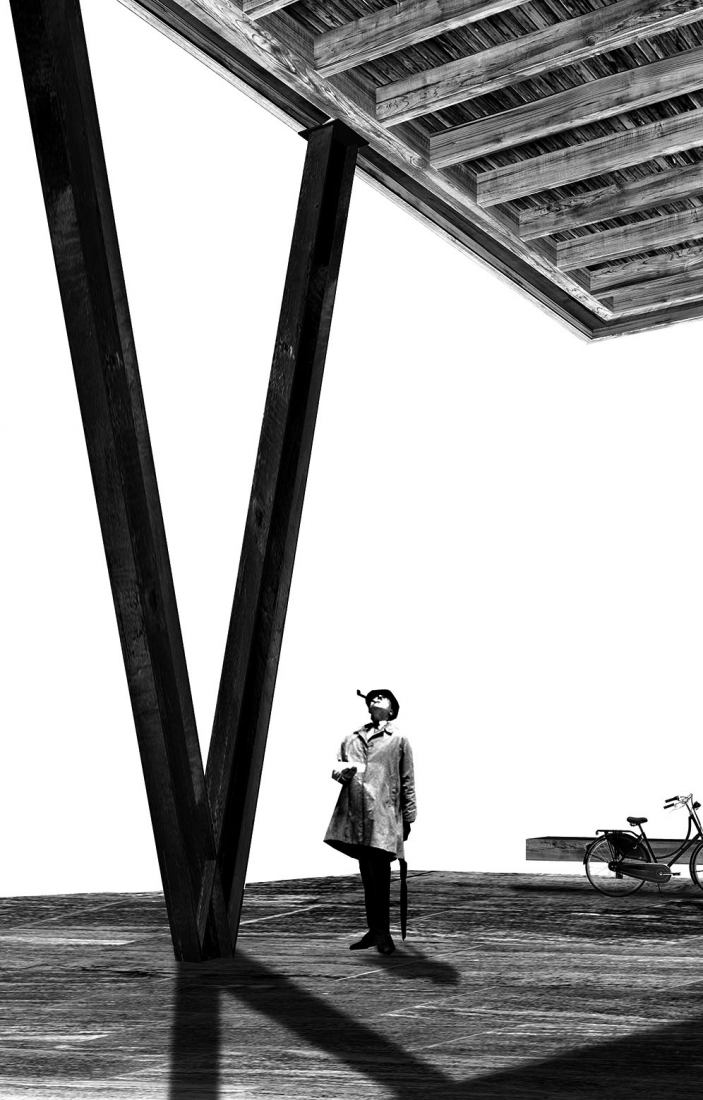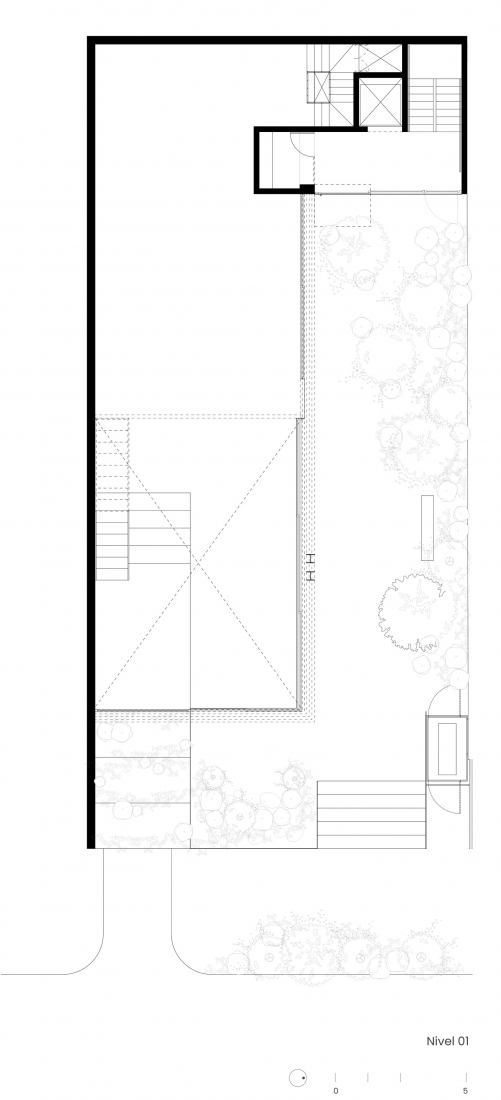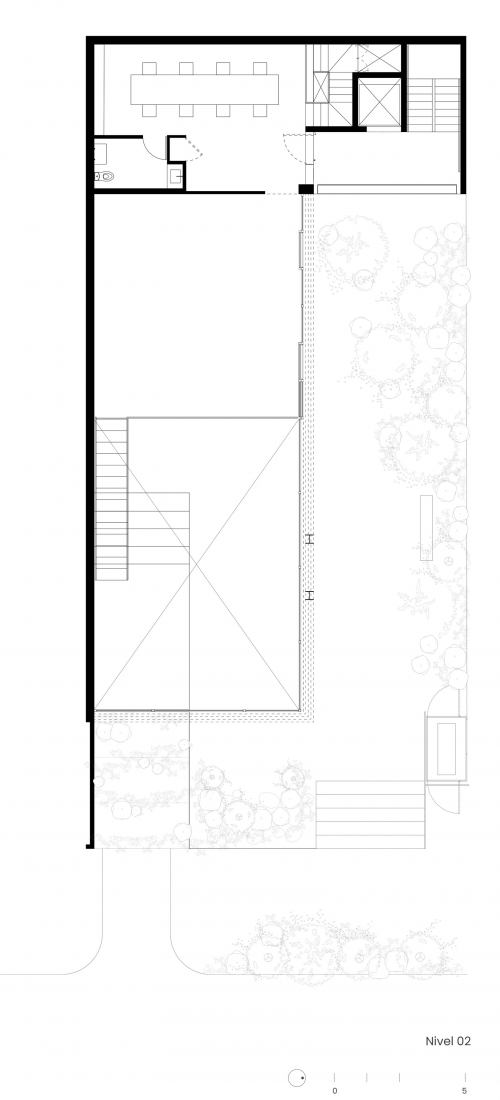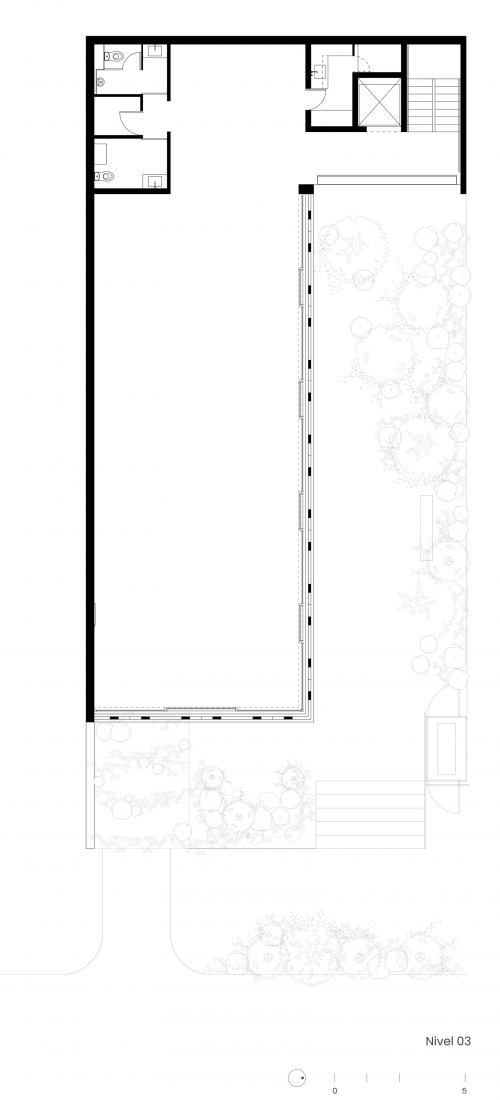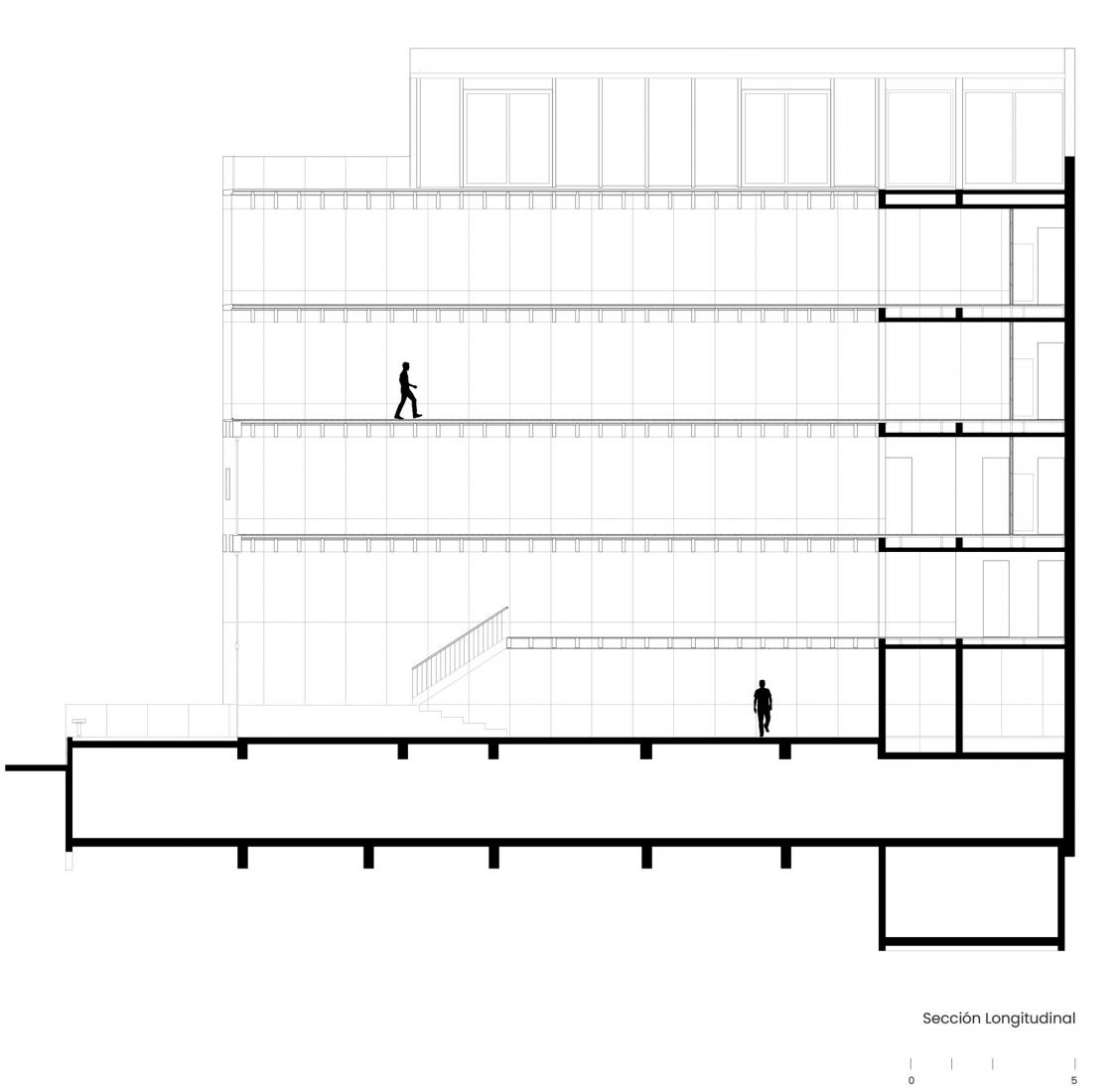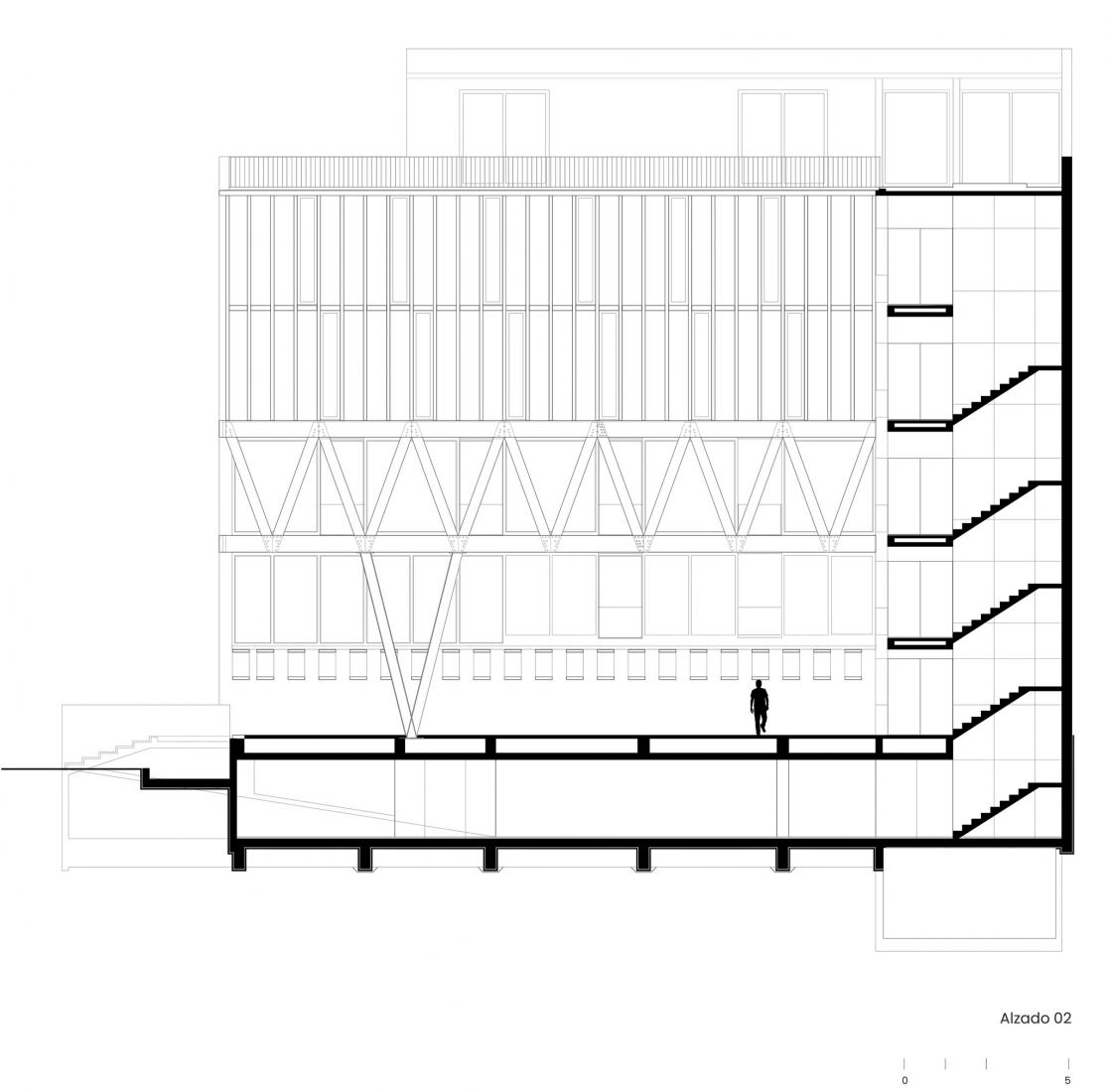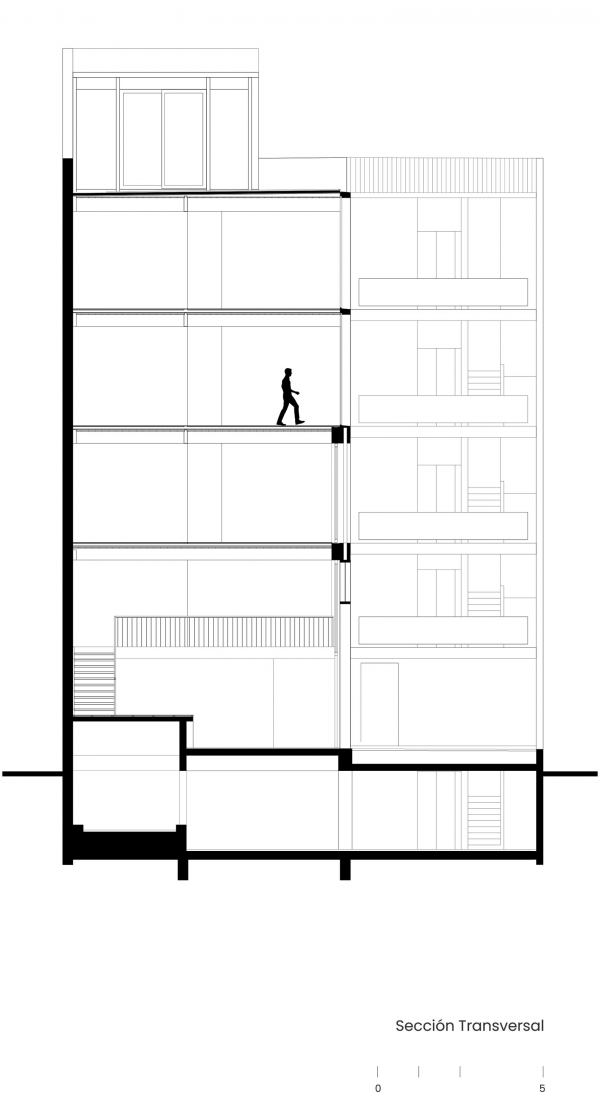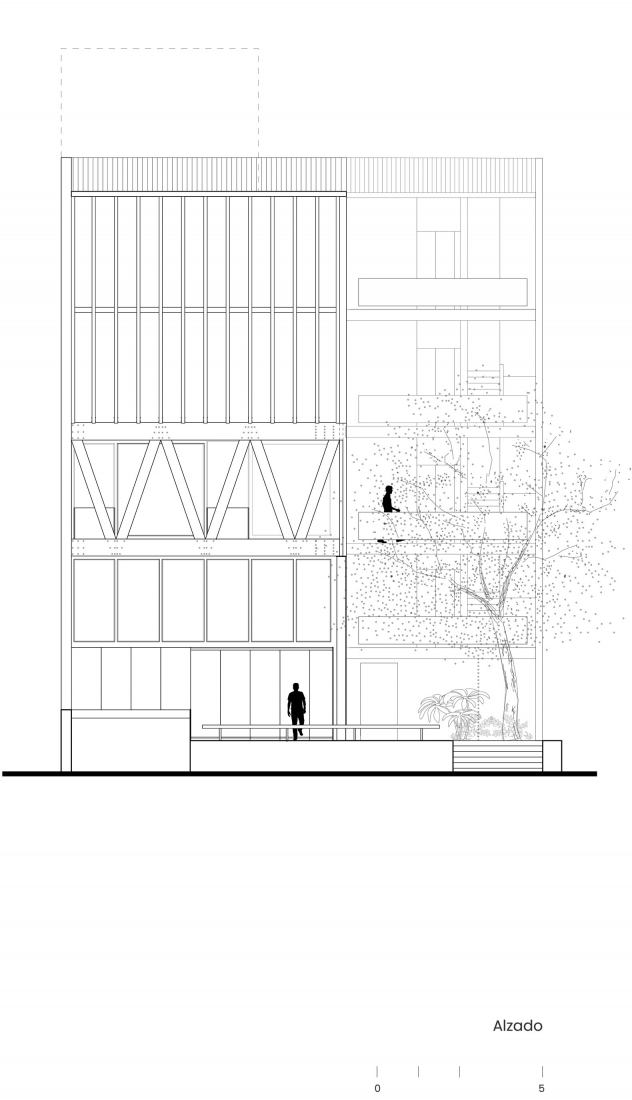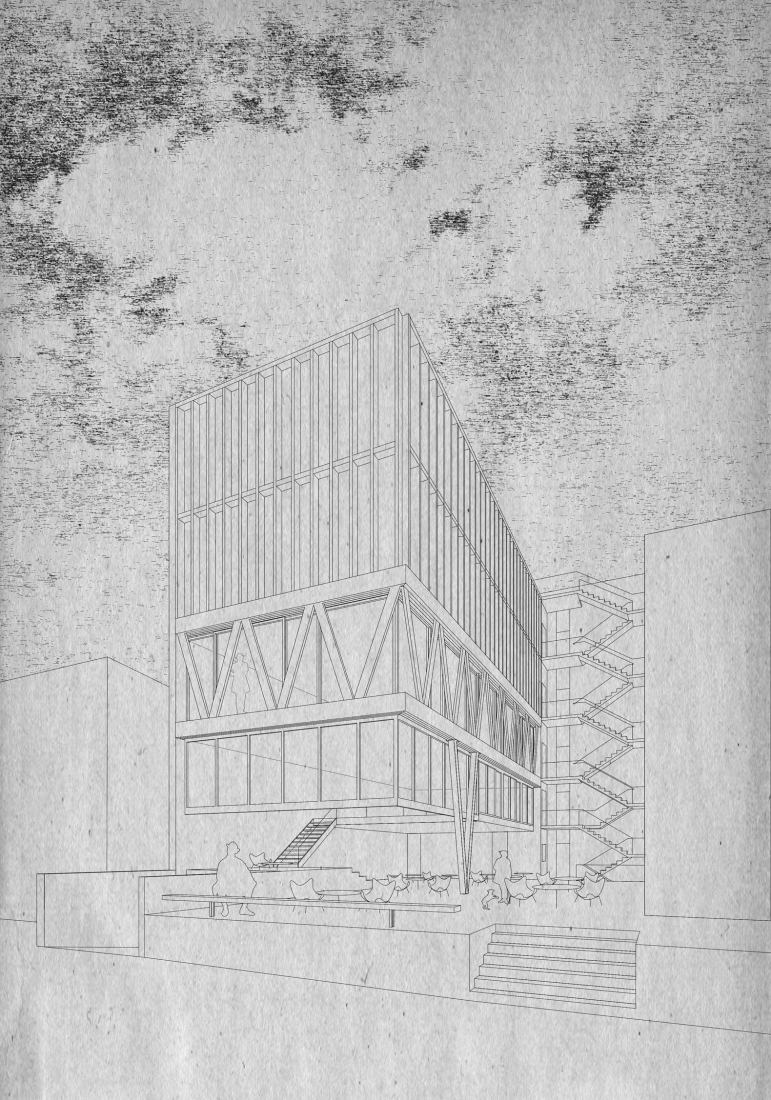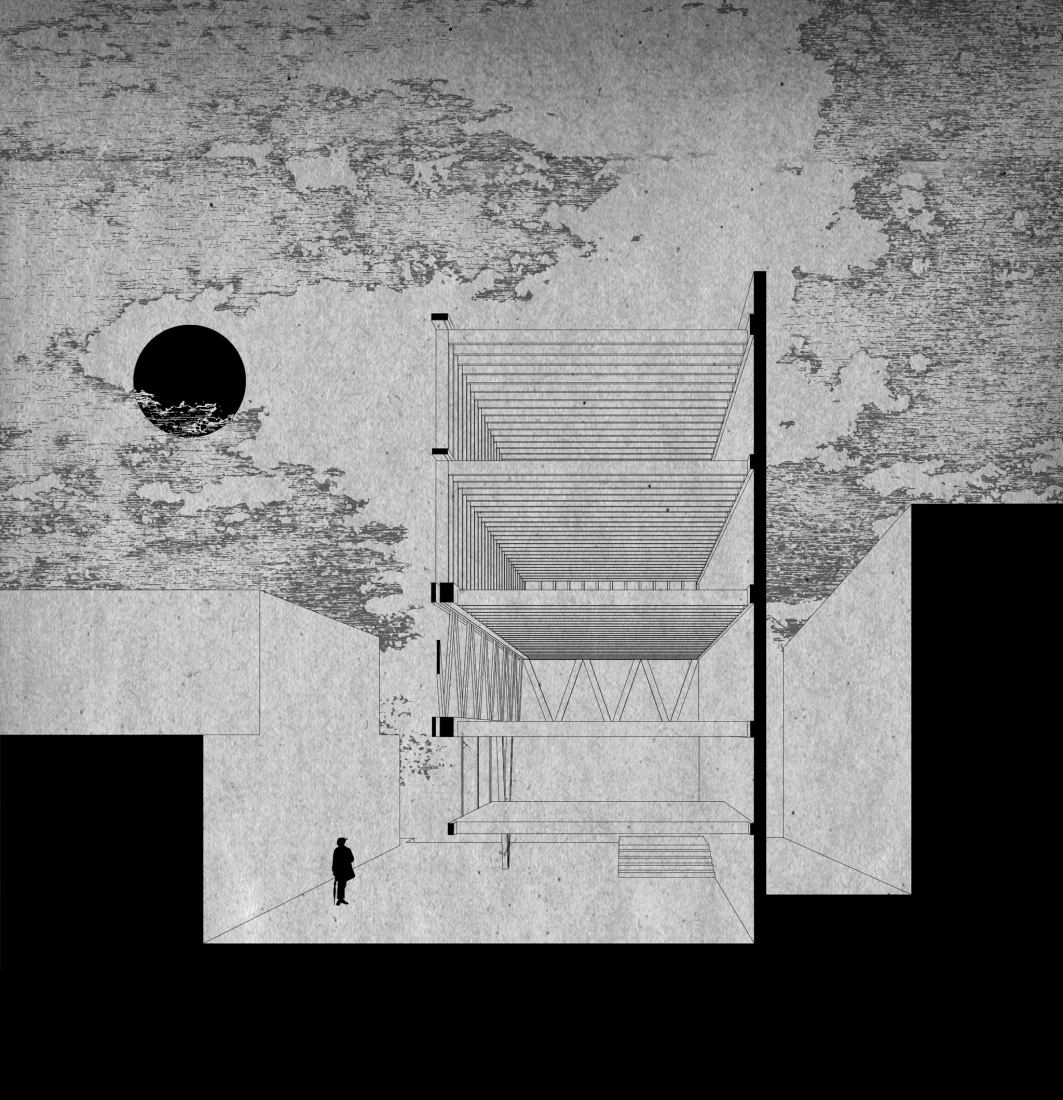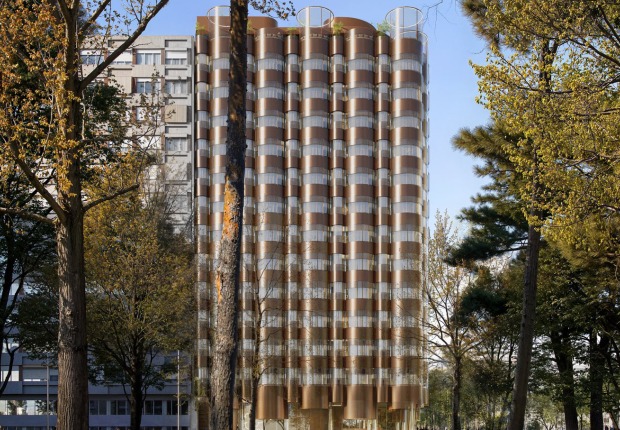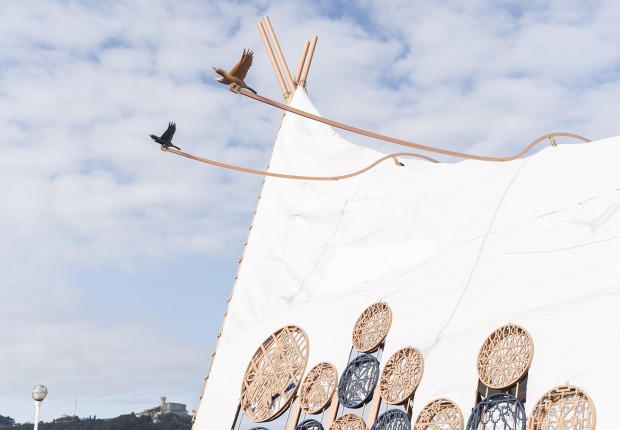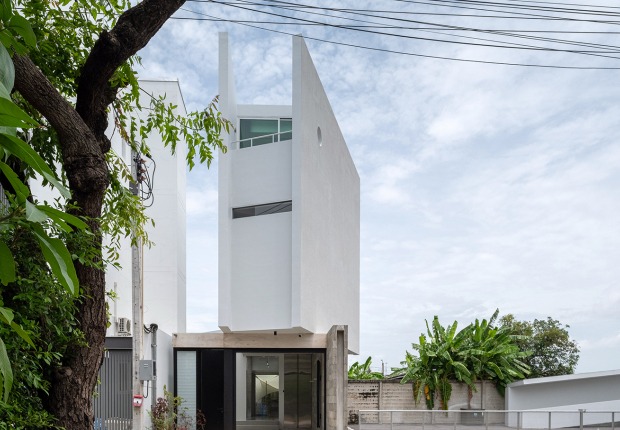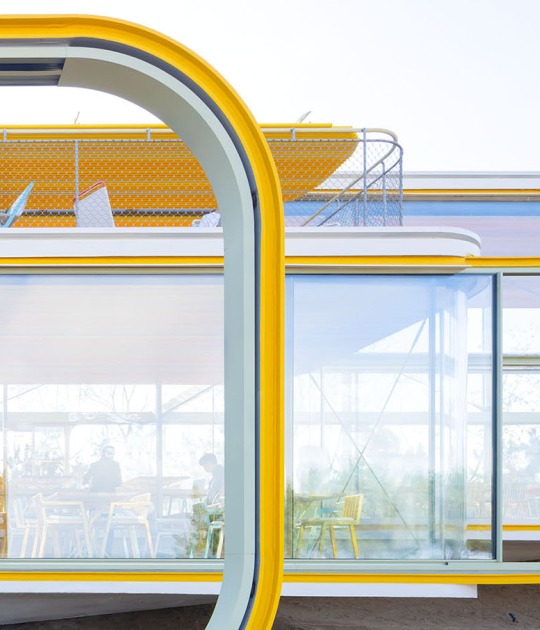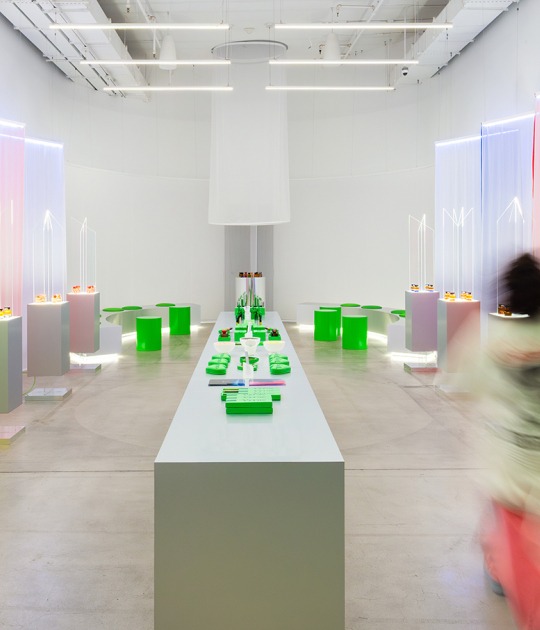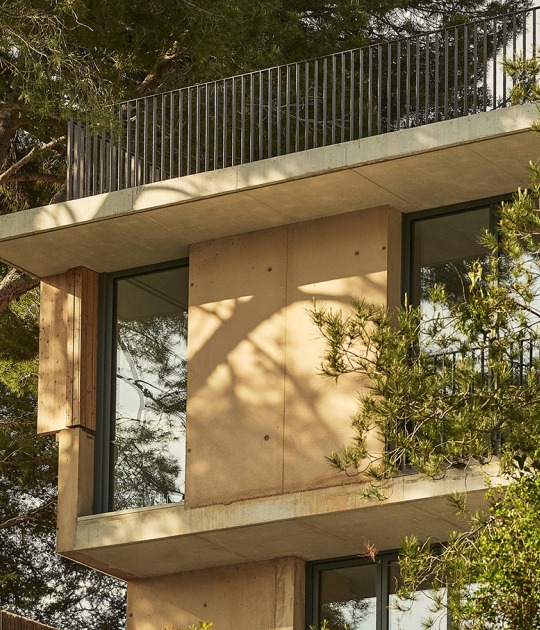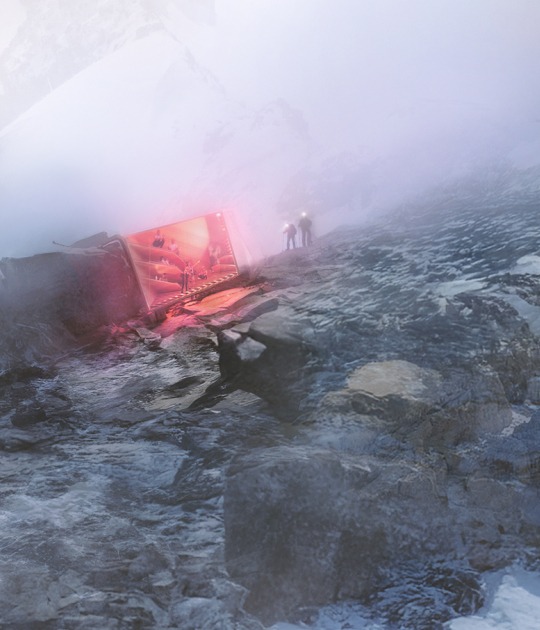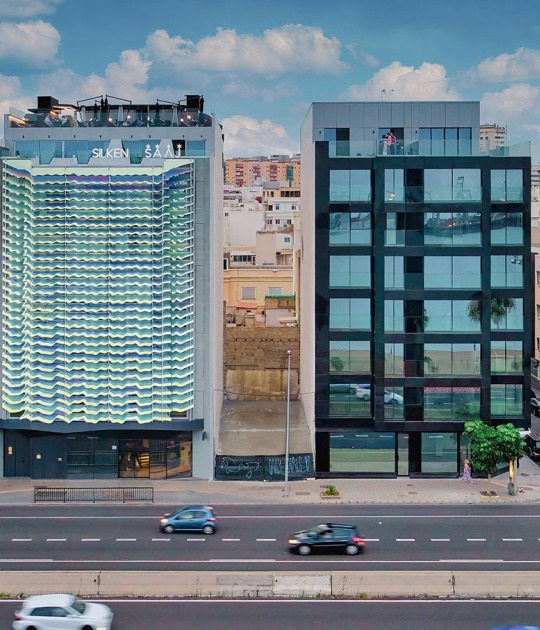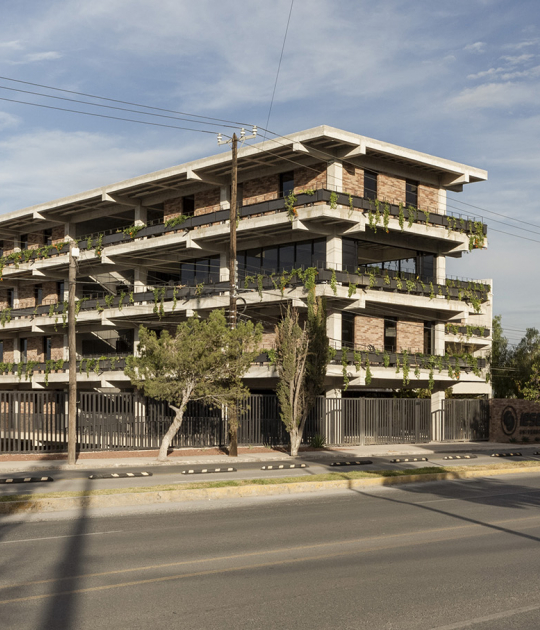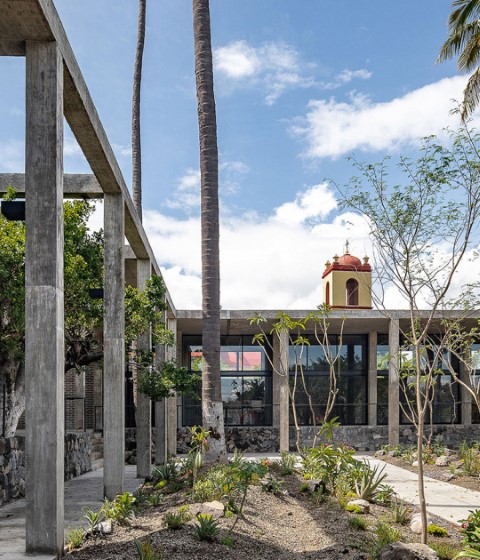A good urban decision that creates the best support for the main protagonist and defines the project's shape, the wooden structure.
The five-story complex seems to float on a lower glass box, revealing pillar-free interiors, all thanks to a laminated wooden truss located on the first floor that supports a wooden box made up of very close fin-shaped elements, also laminated wood. The selection of materials, basically wood, incorporates some steel elements, such as the only "V"-shaped pillar on the ground floor that supports the wooden truss, or the concrete used in the circulation core and in the dividing wall as well. structural.

El Jardín Anatole by Dellekamp / Schleich. Photograph by Rafael Gamo.
Project description by Dellekamp / Schleich
El Jardín Anatole arises from a residual void in Mexico City with potential for density, where the courtyard of a house with historical value was converted into a mixed-use building.
Due to the added value of the area, few properties have areas free of construction, so one of the premises of the design was to blur the limits between the public and the private, creating a public space for connection with the city.
As a result of our continuous research to find alternative materials and construction systems with low impact, the use of wood as the main element for the construction of El Jardín Anatole, the first building with a wooden structure in Mexico, arose. In this way, the architectural expression is based on the structural system to create a wooden box supported by a single steel “V” column that floats over a public square, full of endemic vegetation.

El Jardín Anatole by Dellekamp / Schleich. Photograph by Rafael Gamo.
The program responds to the condition of the place with commercial premises on the ground floor, which frees the structure to compose a continuous space with the square. Subsequently, three levels of offices are developed governed by the modulation of structural wood in order to generate flexible spaces, free of intermediate columns.
The use of few materials, orientation, and structural efficiency allowed the creation of a building that stands out for its simplicity to become an oasis in the middle of the city.
